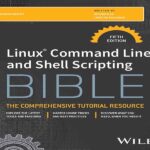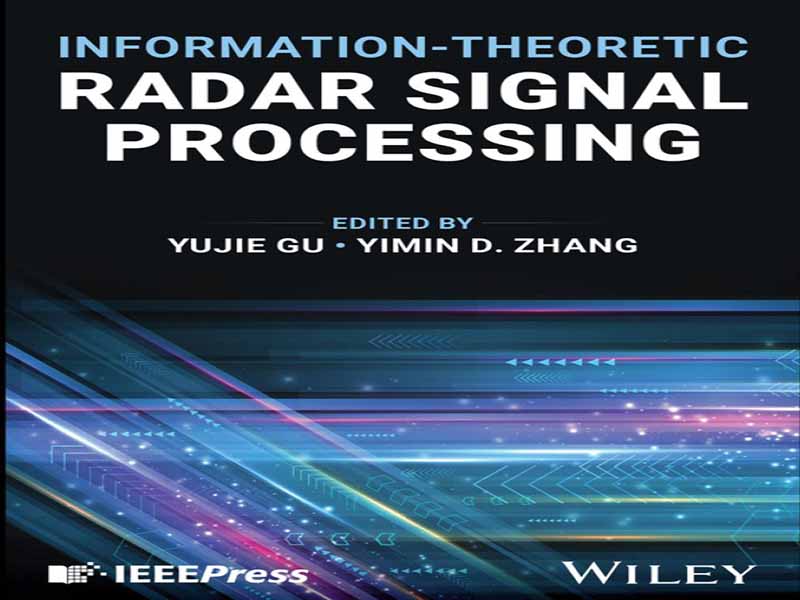- عنوان کتاب: Information-Theoretic Radar Signal Processing
- نویسنده: Yujie Gu, Yimin Zhang
- حوزه: پردازش سیگنال
- سال انتشار: 2024
- تعداد صفحه: 473
- زبان اصلی: انگلیسی
- نوع فایل: pdf
- حجم فایل: 13.6 مگابایت
ریشههای نظریه اطلاعات را میتوان به ۱۰۰ سال پیش و به آثار اولیه فیشر [1]، نایکوئیست [2]، هارتلی [3] و دیگران نسبت داد. در [1]، فیشر با تعریف اطلاعات آماری به عنوان معکوس واریانس یک نمونه آماری، سنگ بنایی را بنا نهاد. این مفهوم اساسی بعداً به طور مستقل توسط کرامر و رائو استخراج شد که از آن برای تعیین حد پایین واریانس تخمین پارامتر استفاده کردند [4، 5]. بنابراین، نظریه اطلاعات از ابتدا به طور طبیعی ارتباط نزدیکی با پردازش سیگنال داشته است. پس از جنگ جهانی دوم، هر دو رشته نظریه اطلاعات و پردازش سیگنال شاهد پیشرفتهای چشمگیری بودند. در سال ۱۹۴۸، شانون مقاله پیشگامانه خود با عنوان «نظریه ریاضی ارتباطات» [6] را منتشر کرد که به عنوان راهنمایی برای رشته رو به رشد نظریه اطلاعات عمل کرد. در همان سال، موسسه مهندسان رادیو (IRE)، سلف موسسه مهندسان برق و الکترونیک (IEEE)، اولین انجمن خود، انجمن پردازش سیگنال، را افتتاح کرد. این تصادف تاریخی، نماد دیگری از رابطه نزدیک بین نظریه اطلاعات و پردازش سیگنال بود. نظریه اطلاعات در ابتدا برای بررسی ارتباط پیامها پدیدار شد. اصول اصلی آن شامل کمیسازی اطلاعات، کدگذاری منبع و کدگذاری کانال است. مشارکتهای شانون جامعهای پویا از محققان را پرورش داد که منجر به تأسیس انجمن نظریه اطلاعات IEEE در سال 1951 شد. میراث او همچنان بر زمینههای ارتباطات، نظریه اطلاعات و پردازش سیگنال تأثیر میگذارد. آثار اولیه وودوارد و دیویس در اوایل دهه 1950 [7، 8] آغاز پردازش سیگنال مبتنی بر نظریه اطلاعات برای کاربردهای رادار بود. با این حال، برخلاف سیستمهای ارتباطی که هدف آنها استخراج اطلاعات از سیگنالهای دریافتی در یک چارچوب مشارکتی است، سیستمهای راداری در محیطهای غیرهمکاری عمل میکنند و به دنبال اطلاعاتی در مورد اهداف ناشناخته، مانند برد، سرعت و زاویه آنها هستند. این اختلاف ذاتی در درک اطلاعات منجر به تأخیر قابل توجه در توسعه پردازش نظریه اطلاعات برای سیستمهای راداری در مقایسه با همتایان ارتباطی شده است. نظریه اطلاعات پس از یک دوره رکود که بیش از سه دهه به طول انجامید، در جامعه پردازش سیگنال رادار تجدید حیات کرد. نقطه عطف کلیدی، انتشار رساله دکترای بل در سال 1988 [9] بود که در آن برای اولین بار از اطلاعات متقابل به عنوان یک معیار بهینهسازی برای طراحی شکل موجهای راداری که اطلاعات هدف استخراج شده از اندازهگیریهای دریافتی را به حداکثر میرساند، استفاده شد. از آن زمان، نظریه اطلاعات شاهد رنسانسی در پردازش سیگنال رادار، به ویژه در دوران رادارهای چند ورودی چند خروجی (MIMO) بوده است. در سال 2005، گو و همکارانش [10] بینشهای بیشتری در مورد ارتباط نظری بین اطلاعات متقابل در نظریه اطلاعات و حداقل میانگین مربعات خطا (MMSE) در نظریه تخمین ارائه دادند. امروزه، معیارهای نظریه اطلاعات، از جمله اطلاعات فیشر، آنتروپی شانون، اطلاعات متقابل و واگرایی کولبک-لیبلر (که به عنوان آنتروپی نسبی نیز شناخته میشود)، به پایه و اساس سیستمهای رادار تطبیقی تبدیل شدهاند و موفقیت زیادی در حل مسائل مختلف پردازش سیگنال رادار داشتهاند. این کتاب مقدمهای جامع بر معیارها، روشها و کاربردهای نظریه اطلاعات در پردازش سیگنال رادار با تمرکز بر آخرین پیشرفتهای نظری و عملی در موضوعات مهم منتخب ارائه میدهد. این کتاب نه تنها برای محققان پردازش سیگنال رادار، بلکه برای دانشجویان کارشناسی ارشد و دکترا، محققان و مهندسانی که روی طیف وسیعی از پردازش سیگنال و کاربردهای آن، از جمله اما نه محدود به سیستمهای رادار، کار میکنند، در نظر گرفته شده است. فرض بر این است که خوانندگان پیشینهای در جبر خطی، احتمال و آمار، حسگری فشرده، تشخیص و تخمین، کنترل و بهینهسازی، نظریه اطلاعات و همچنین سیستمهای رادار دارند. این کتاب شامل چهارده فصل مستقل است که هر کدام بر یک موضوع خاص تمرکز دارند. این فصلها که توسط متخصصان برجسته دانشگاه، صنعت و دولت نوشته شدهاند، میتوانند به طور کلی در شش حوزه طبقهبندی شوند: تشخیص هدف (فصلهای ۱ تا ۳)، تخمین پارامتر (فصلهای ۴ و ۵)، تصویربرداری رادار (فصلهای ۶ و ۷)، ردیابی هدف (فصلهای ۸ تا ۱۰)، مدیریت منابع (فصلهای ۱۱ و ۱۲) و تحلیل حد عملکرد (فصلهای ۱۳ و ۱۴).
The roots of information theory can be traced back 100 years to the early works of Fisher [1], Nyquist [2], Hartley [3], and others. In [1], Fisher laid down a cornerstone by defining statistical information as the reciprocal of the variance of a statistical sample. This fundamental concept was later independently derived by Cramér and Rao, who utilized it to establish the lower bound on parameter estimation variance [4, 5]. Therefore, information theory has been naturally closely related to signal processing from the beginning. AfterWorldWar II, both disciplines of information theory and signal processing witnessed remarkable advancements. In 1948, Shannon published his groundbreaking article, “A mathematical theory of communication” [6], which served as a lodestar for the burgeoning discipline of information theory. In the same year, the Institute of Radio Engineers (IRE), the predecessor of the Institute of Electrical and Electronics Engineers (IEEE), inaugurated its first society, the Signal Processing Society. This historical coincidence further symbolized the close relationship between information theory and signal processing. Information theory originally emerged to explore the communication of messages. Its core principles include quantification of information, source coding, and channel coding. Shannon’s contributions fostered a vibrant community of scholars, leading to the establishment of the IEEE Information Theory Society in 1951. His legacy continues to influence the fields of communications, information theory, and signal processing. The earlier works of Woodward and Davies in the early 1950s [7, 8] marked the beginning of information-theoretic signal processing for radar applications. However, unlike communication systems, which aim to extract information from received signals in a cooperative framework, radar systems operate in noncooperative environments, seeking information about unknown targets, such as their range, velocity, and angle. This inherent disparity in understanding of information has resulted in a notable lag in the development of information-theoretic processing for radar systems compared with the communication counterparts. Information theory experienced a resurgence within the radar signal processing community following a period of stagnation spanning over three decades. A key turning point was the publication of Bell’s PhD dissertation in 1988 [9], wherein mutual information was used for the first time as an optimization criterion to design radar waveforms that maximize the target information extracted from the received measurements. Since then, information theory has witnessed a renaissance in radar signal processing, especially in the era of multiple-input multiple-output (MIMO) radar. In 2005, Guo et al. [10] provided further insights into the theoretical connection between mutual information in information theory and minimum mean square error (MMSE) in estimation theory. Nowadays, information-theoretic criteria, including Fisher information, Shannon entropy, mutual information, and Kullback–Leibler divergence (also known as relative entropy), have become the foundation of adaptive radar systems and found great success in solving various radar signal processing problems. This book provides a comprehensive introduction to information-theoretic criteria, methods, and applications in radar signal processing with a focus on the latest theoretical and practical advances in selected important topics. This book is intended not only for radar signal processing researchers, but also for postgraduate and PhD students, researchers, and engineers working on a broad spectrum of signal processing and its applications, including but not limited to radar systems. The readers are assumed to have some background in linear algebra, probability and statistics, compressive sensing, detection and estimation, control and optimization, information theory, as well as radar systems. The book contains fourteen self-contained chapters, each focusing on a specific topic. These chapters, contributed by leading experts fromacademia, industry, and government, can be broadly categorized into six areas: target detection (Chapters 1–3), parameter estimation (Chapters 4 and 5), radar imaging (Chapters 6 and 7), target tracking (Chapters 8–10), resource management (Chapters 11 and 12), and performance bound analysis (Chapters 13 and 14).
این کتاب را میتوانید از لینک زیر بصورت رایگان دانلود کنید:



































نظرات کاربران